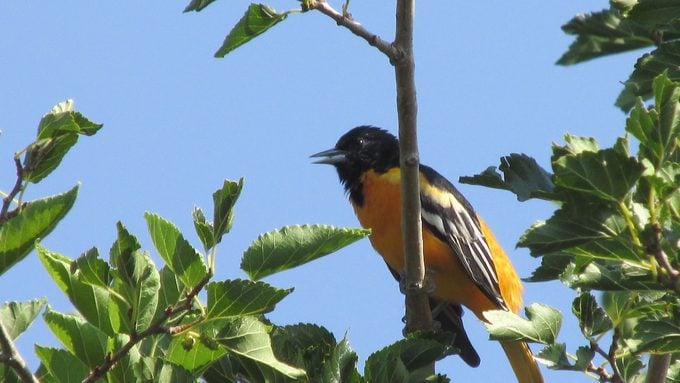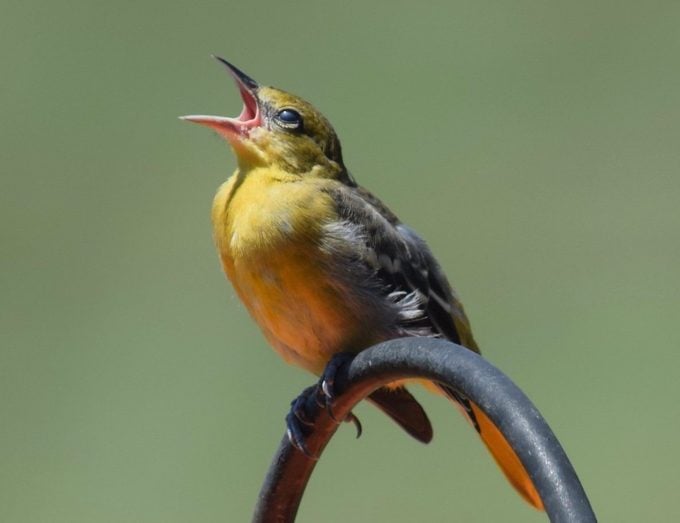What Does a Baltimore Oriole Song Sound Like?
Updated: Mar. 04, 2021
In spring, listen for a melodic Baltimore oriole song in your backyard and look for these black and orange birds. Learn what an oriole bird song sounds like.

Gene Stratton-Porter, a naturalist in the early years of the 20th century, described the Baltimore oriole song as “spilling notes of molten sweetness, as it shot like a ray of detached sunshine.” It’s true, nothing brightens a day like this member of the blackbird family, thanks to its striking orange breast, black head and white-barred wings, plus its bold, melodic call.
“I love Baltimore orioles’ song and gorgeous colors. When they sing, it’s like happiness put to birdsong,” says Grace Huffman of Oklahoma City, Oklahoma.

It’s primarily the male birds that sing, mostly in the breeding season, and they use their songs to announce a territory claim. If you see a male Baltimore oriole singing away, he’s warning other males that this plot of ground is already taken and to stay off his turf. A Baltimore oriole song can also serve to attract a female or to help the male stay in touch with his mate, but territorial defense seems to be the main motivation. Discover how orioles weave elaborate nests.
During the spring mating season, male orioles attract females by singing, chattering and hopping from branch to branch. If a female is interested, the male bows and fans his wings and tail, then the female responds by singing and quivering her wings. Check out sweet photos that show how birds flirt and attract mates.
Listen each spring for a Baltimore oriole’s loud, rich song in a tree above you, as if they’re whistling a tune to tell you where to find them.
Bird songs provided by the Cornell Lab of Ornithology.
Learn how to attract orioles and discover the types of orioles to look for in North America.




















